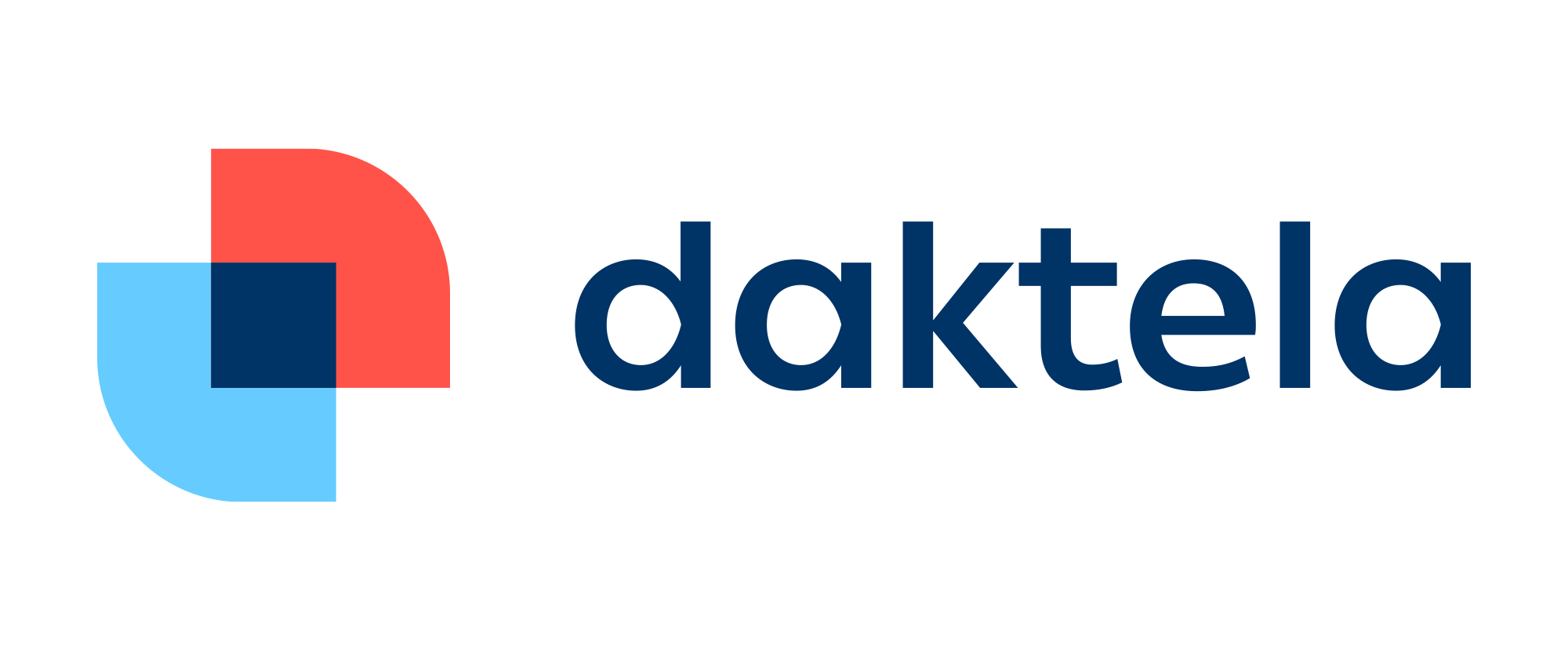Increasingly, companies today use the help of the latest artificial intelligence tools that work within a sophisticated communications system, such as our Daktela V6 application.
The basis is a clear connection of the complete communication with a given client, from calls to SMS to email. Financial institutions can thus quickly and easily verify the customer within Daktela, inform them of the current status of their loan or bank account or offer them a new loan or other financial service.
Clearly archived and easily traceable communication is important when dealing with various financial matters, such as reminding clients about a loan repayment or sending/delivering a demand to pay a certain amount by a certain date. For example, it is easily traceable in the system that a particular borrower has been informed of an obligation to pay or of a deadline for repayment.
If you were to solve a similar problem without a reliable automatic communication system that is able to record and store not only emails and SMS but also to keep a record of individual calls, then the already quite complex communication with the debtor often becomes an almost unsolvable problem. Artificial intelligence, which is represented in contact centres mainly by voicebots and NLP chatbots, can also help in complex communication situations.
Bots are extremely powerful, handling hundreds of parallel calls and chats at once. They can handle many different situations. One such situation in which they prove to be an effective communication tool is debt collection. They can speed up the process and make it easier for both parties. They remind or recover amounts owed quickly and efficiently.
Today’s voicebots can work with pace of speech, tone of voice and emotions. They can handle different types of objections and minimise the risk of misunderstandings. In a call with a borrower, they respond in a way that achieves the desired goal, i.e. to end the conversation with a mutual agreement. If the conversation does not go in the right direction, for example the borrower does not understand the requests or refuses to communicate with the bot, the voicebot simply transfers the conversation to a live operator who has the entire communication history, including the transcript of the call with the voicebot itself.
NLP chatbots allow for quick personalised responses and real-time resolution of requests. They can easily service all channels that are key to the business. They can also respond to queries and requests that stray from the topic at hand. For example, Česká spořitelna’s chatbot George can even surprise clients with a joke and it responds naturally to questions of a personal nature.
However, it is important to mention that practice confirms that the willingness of debtors to communicate with voicebots or chatbots is significantly higher than with live operators, for whom these calls are in many cases very demanding, unpleasant and least preferred.
Some Sociéte Générale banks have been using artificial intelligence technology for several years, which is far more successful than “standard agents” in client centres. According to data from this banking group, there has already been a 24% increase in recovery success rates last year, while at the same time a nearly 90% reduction in overall costs.
How is this possible? Because artificial intelligence is constantly learning from its experience and analysis of conversations, following selected steps and, most importantly, completely unemotional. The system first automatically performs certain actions such as sending a reminder, followed by an SMS, then it can send a voice message to the client’s mobile phone.
It then evaluates whether the client responded at all within a certain timeframe and how they communicated – whether via webchat or social networks, by email, from a computer or mobile. According to this, the AI will individually set the next communication steps. Of course, a live operator in the contact centre can take over the communication at any time.
Artificial intelligence has information about the client and has knowledge of market data. Financial institutions can thus use this modern technology, for example, to target financial products to a specific client, i.e. to personalise the product to best reflect the client’s needs.
The right tools and systems support financial institutions’ efforts to create a productive and efficient service contact centre. This enables financial institutions to achieve better results and longer-term client relationships.







